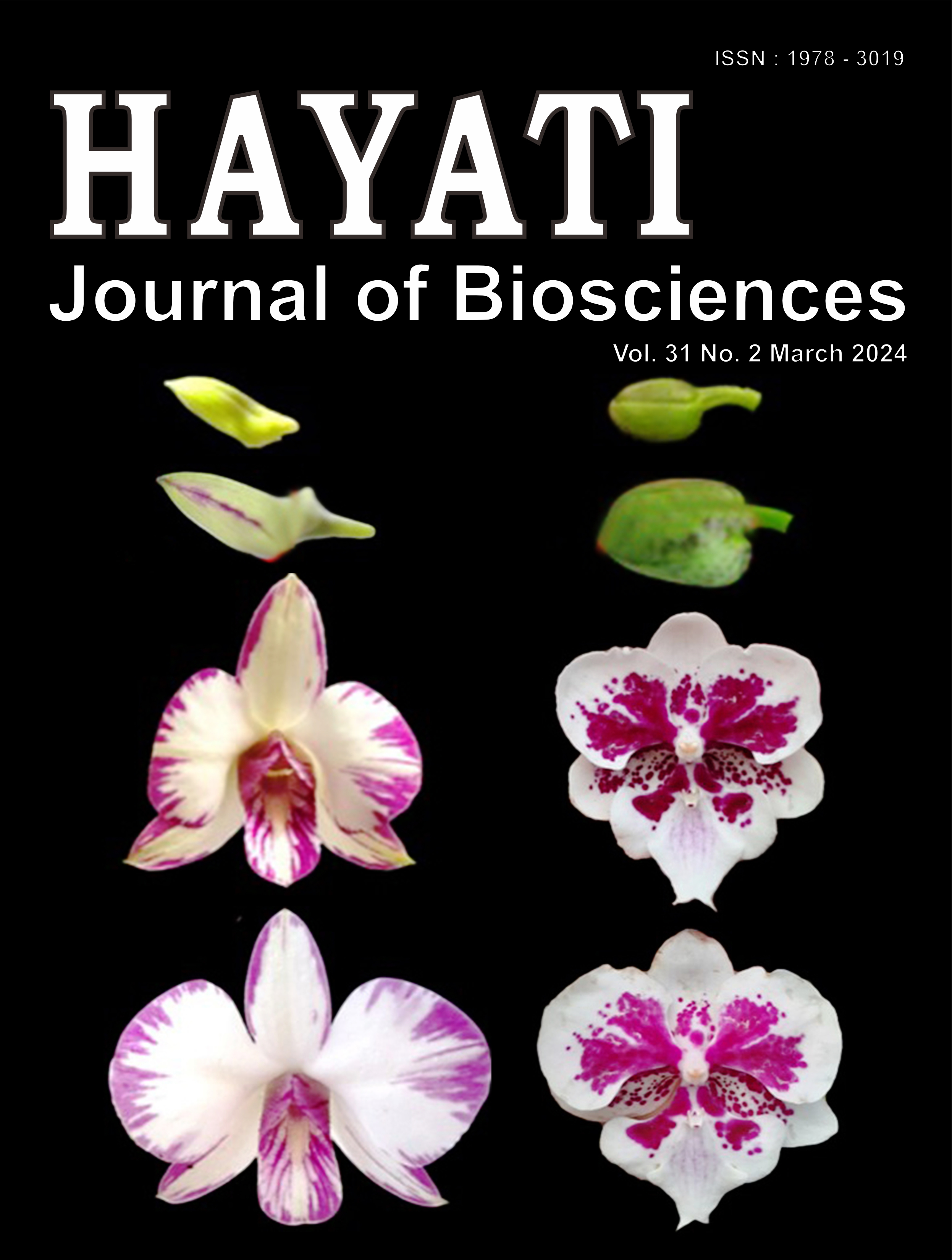Effects of Surfactants on Biological, Physiological, and Histological Performance of Mahseer Seeds, Neolissochilus soro
Abstract
Mahseer (Neolissochilus soro) grows and develops in Indonesian lakes and rivers. However, in line with the increase in population, the pollution load that enters water bodies is increasing due to anthropogenic activities along the river. One of the chemicals that can potentially be a source of water pollution is Linear Alkylbenzene Sulfonate (LAS). This study aims to determine the lethal toxicity of LAS surfactant to mahseer and to analyze the sub-lethal effect of this surfactant on the biological, physiological, and histological conditions of mahseer seeds. Parameters studied included lethal toxicity (LC50), sub-lethal toxicity, and biological, histological, and hematological conditions. The results showed that the LAS surfactant had an LC50-96 hour value of 6.14 mg/L in mahseer and was classified as highly toxic. Fish exposed to LAS for 40 days experienced a decrease in specific growth rate and feed efficiency as the surfactant concentration increased. Exposure to LAS also decreases the number of erythrocytes, hemoglobin, hematocrit, and blood sugar levels while increasing the number of leukocytes. There was also damage to the gills of fish exposed to LAS. In general, the sub-lethal concentration of LAS negatively affected mahseer seeds.
Downloads
Copyright (c) 2023 Iffi Rizkiya, Berry Juliandi, Kukuh Nirmala, Dewi Puspaningsih, Imam Taufik

This work is licensed under a Creative Commons Attribution-NonCommercial 4.0 International License.
HAYATI J Biosci is an open access journal and the article's license is CC-BY-NC. This license lets others distribute, remix, tweak, and build upon author's work, as long as they credit the original creation. Authors retain copyright and grant the journal/publisher non exclusive publishing rights with the work simultaneously licensed under a https://creativecommons.org/

























.png) IPB University
IPB University Department of Biology
Department of Biology The Indonesian Biological Society
The Indonesian Biological Society 

